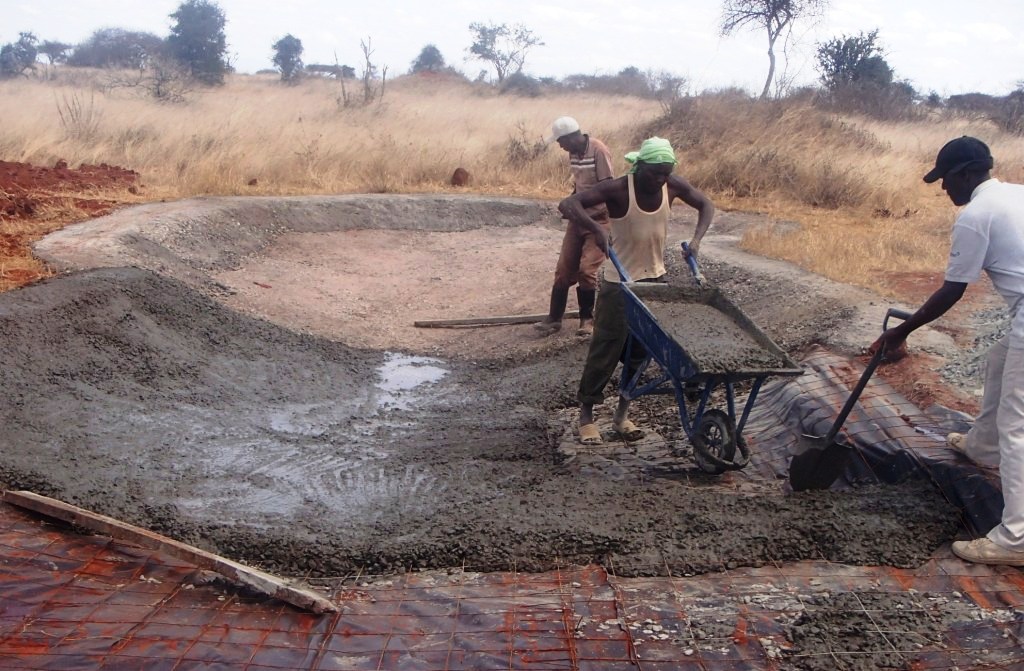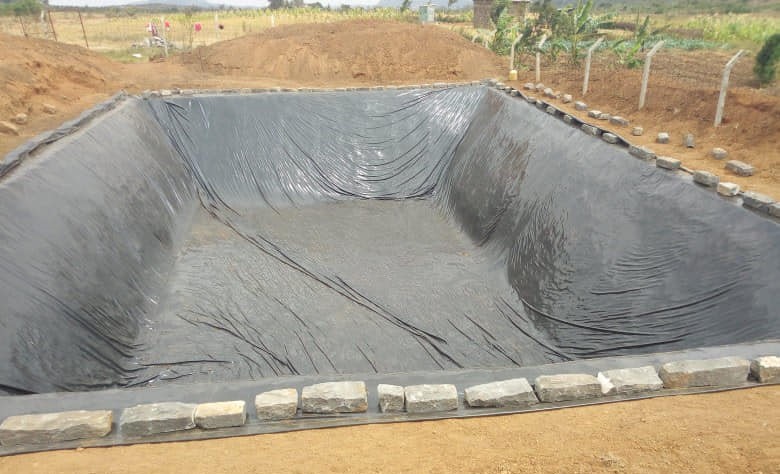



They store rainwater and use it to irrigate their farms whenever there is drought, enabling them to produce food year-round
This project, as suggested by Trocaire on the ground in Ishiara, involves the construction of individual household waterpans as a means of storing the rainwater which falls in the brief wet season. It is then used for watering crops and feeding of goats, cattle and chickens throughout the longer dry season. These excavated household water pans are typically 20x15x5 ft. These excavated household water pans are typically 20x15x5 ft. Most households collect the rainwater from the corrugated roofs of their houses and/or animal shelters”
Typically, several households will work together in groups and excavate and construct the water pans through a solidarity group model.
They agree on the number of days in a week they all can commit to the works. They will all work together until all the water pans are completed for the group.
Materials for lining are delivered in bulk and stored at each household. In consultation with the group members, qualified local masons are brought on board and given the assignment of building the stone and concrete lining to the pans.
During the construction, the Trocaire project staff will monitor the works to ensure quality and progress.
Trocaire advise that the typical cost of a waterpan is €220 to €250. We hope to raise funds to begin by building 20 waterpans at a cost of approx. €5,000.
Household contribution: The community contribution in this whole process is considered key and usually include the following: –
1. Water pan excavation
2. Provision of locally available materials including sand, hardcore and ballast.
3. Provision of unskilled labour during the water pans lining process.


From experience the concrete lining is considered more suitable in terms of cost implication as the cost incurred is much lower that buying a plastic liner from a stockist. A plastic liner of a similar water pan would cost €450. Secondly the concrete liner is likely to last for many years as compared to a plastic liner that would have a life of between 2-7 years depending on the gauge.
Protection issues.
Households have been made aware of the importance of putting security measures in place to minimise risks posed by the open water pans to humans and livestock. Some of the proposed and agreed on measures include :
- Planting a bush fence around the water pans while considering shallow rooted plants
- Providing a fence around the pan.
- Providing a shade to the water pans.
- Provision for water inlet and an outlet that is a distant from the water pan to ensure that water is drawn at a distance.